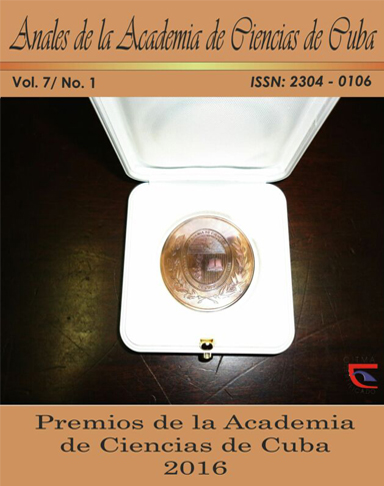CARACTERIZACIÓN GENÉTICA DEL GÉNERO CROCODYLUS (CROCODYLIA: CROCODYLIDAE) EN CUBA MEDIANTE EL EMPLEO DE MARCADORES NUCLEARES Y MITOCONDRIALES
Abstract
Entre los crocodylianos del Nuevo Mundo, Crocodylus rhombifer presenta la menor distribución natural y es además uno de los más amenazados. Esta especie endémica coexiste en Cuba con el cocodrilo americano (C. acutus), el segundo miembro del género que habita en la isla. Ambas especies se hibridan, tanto en poblaciones naturales como en cautiverio. El presente estudio se centra en la caracterización genética de poblaciones de Crocodylus que habitan en Cuba, mediante el empleo de marcadores nucleares y mitocondriales. Un total de 329 individuos provenientes de las ciénagas de Zapata y Birama se incluyeron en el estudio. El grado de hibridación interespecífico estimado a partir de nueve loci microsatélites resultó ser elevado y subestimado, tanto en el medio natural (49,1%), como en cautiverio (16,1%). El análisis del polimorfismo del ADNmt aportó evidencias de hibridación bidireccional entre C. rhombifer y C. acutus en su medio natural. Por otro lado, reveló una acentuada variación intraespecífica para C. acutus en contraste con una falta de diferenciación genética a este nivel entre las entidades morfológicas C. rhombifer y C. acutus que habitan en Cuba. Adicionalmente, se obtuvo evidencia de paternidad múltiple en el 100% de los nidos de C. rhombifer muestreados en cautiverio.Downloads
Downloads
Published
How to Cite
Issue
Section
License
The journal Anales de la Academia de Ciencias de Cuba protects copyright, and operates with a Creative Commons License 4.0 (Creative Commons Attribution-NonCommercial License 4.0). By publishing in it, authors allow themselves to copy, reproduce, distribute, publicly communicate their work and generate derivative works, as long as the original author is cited and acknowledged. They do not allow, however, the use of the original work for commercial or lucrative purposes.
The authors authorize the publication of their writings, retaining the authorship rights, and assigning and transferring to the magazine all the rights protected by the intellectual property laws that govern in Cuba, which imply editing to disseminate the work.
Authors may establish additional agreements for the non-exclusive distribution of the version of the work published in the journal (for example, placing it in an institutional repository or publishing it in a book), with recognition of having been first published in this journal.
To learn more, see https://creativecommons.org






